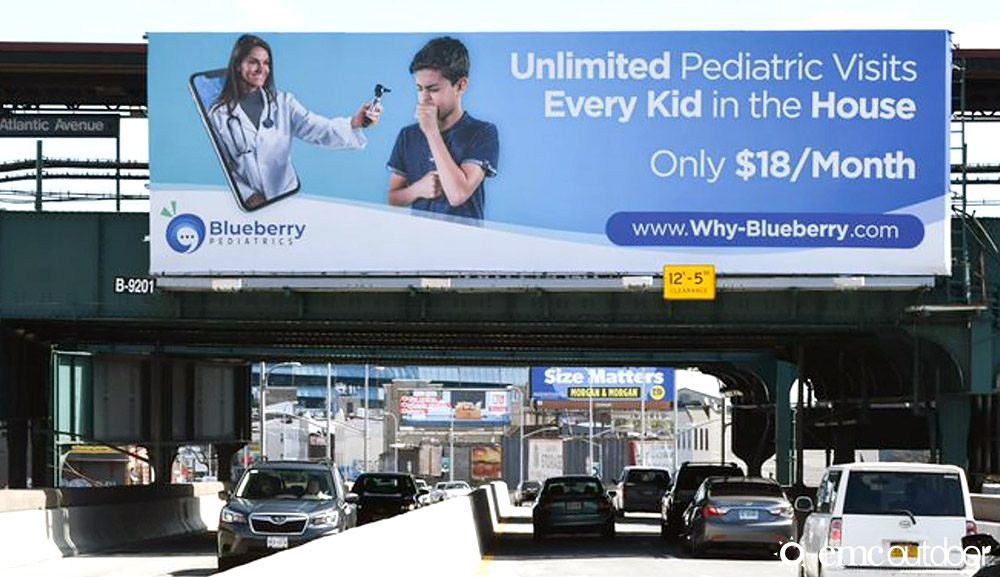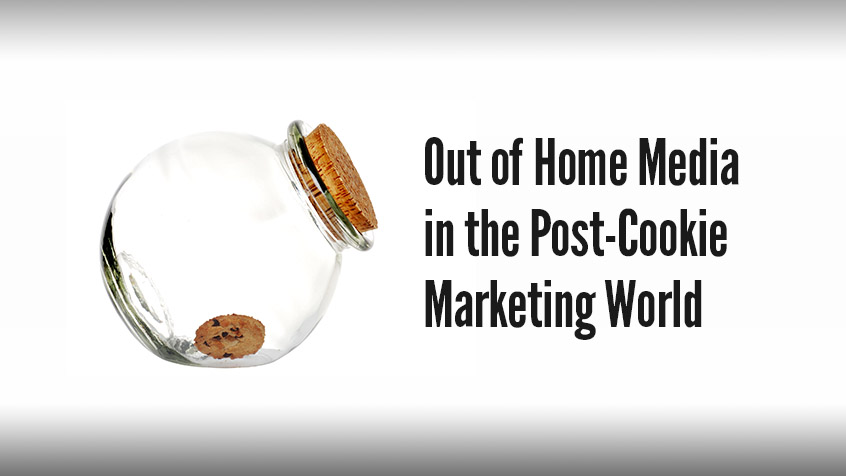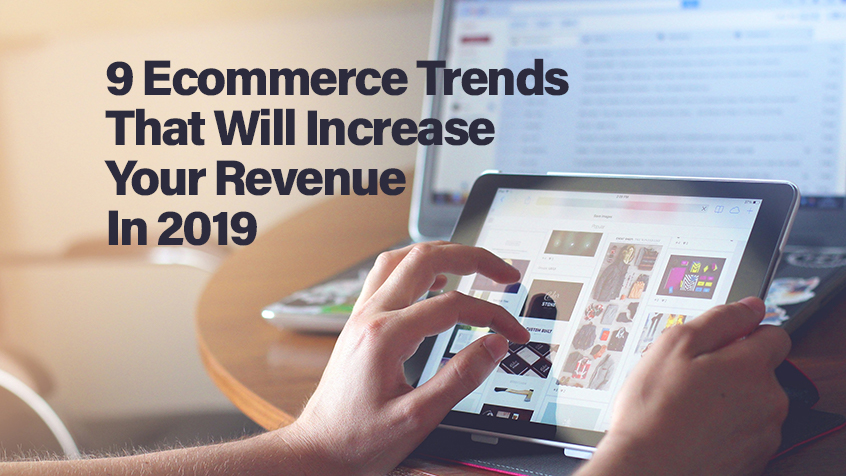As the marketing world prepares for the deprecation of third party cookies we take a look at the role of Out of Home media in the post-cookie marketing world.
Google’s plans for third-party cookie phaseout sent the marketing world reeling. For savvy marketers, the phaseout isn’t a big surprise. Safari’s and Firefox’s 3rd-party cookie blocking campaign is in full swing. Meanwhile, legislation like GDPR and CCPA is making a huge emphasis on user privacy, turning data collection into a serious challenge.
While some marketing experts are hoping for the search giant’s alternatives, others are looking for new ways to gather and leverage consumer data. By looking a little closer, you can see the expanding role of Out of Home media in the post-cookie marketing world.
What Does the Loss of Cookies Mean?
Third-party cookies used to be an essential part of digital marketing campaigns. If you’ve been relying on these cookies to build your marketing strategy, their phaseout can seem daunting. In reality, it may not affect marketers as much as they fear. But it will be imperative for marketers to understand and have plans in place to compensate. By deleting third-party cookies, Google gives the consumer more privacy while pushing the marketer to focus on first-party relationships.
While the phaseout has been coming for some time, the COVID-19 pandemic accelerated online behavior, making the need for privacy even more obvious. IDing users and giving them a choice to consent are on the agenda.
Was the 3rd-Party Cookie All That Wonderful?
Was the 3rd party cookie (let’s talk about it in the past tense) a highly useful audience identification tool? According to a study by CTV provider Innovid 83% of marketers felt that 3rd party cookies were somewhat to very important as part of their marketing strategy, But, for many years, marketers have been struggling to achieve a reasonable ROI because:
- Third-party cookies were time-bound and domain-specific.
- Third-party cookies couldn’t be used between devices.
- Impressions were often overstated while conversions were undercounted.
- Analytics were often skewed.
In 2020, 80% of advertisers relied on third-party cookies for at least a part of their campaigns. However, being highly dependent on third-party data was never a good strategy. The efficiency of PPC ads suffered due to poor data quality. As a result, consumers saw irrelevant ads and turned to ad blockers, private modes, and anonymous communication software.
Turning to First Party Cookies
Even before the 3rd party cookie’s demise, first-party cookies carried more value. The Innovid study showed that 96% of marketers agree that first party data will be paramount moving forward.The data provided by users directly is more accurate, rich, and valuable than anything you could collect from another company. As a bonus, it’s absolutely free.
By leveraging first-party cookies, you are:
- Turning to consent-driven personalization.
- Building authentic relationships with consumers.
- Attracting higher-quality audiences.
- Enjoying better analytics.
- Improving the ability to target precise audience segments.
Of course, first-party cookies can’t replace third-party cookies. Thankfully, the third-party cookie phaseout is gradual, so you have time to implement new tactics.

What Are Companies Doing to Replace Cookies?
Google and other media companies are working hard to offer alternatives aimed at simplifying the marketers’ transition to the cookieless realm.
Google’s FloC (Federated Learning of Cohorts)
Instead of tracking users with cookies, FLoC is implemented on the browser side to analyze user’s online behavior locally.
Chrome monitors the user’s browsing activity and places them in a “cohort” with other users based on similar tastes and behavior. Then Chrome reports these cohorts to websites that use FLoC.
In short, instead of allowing third-party websites to track users’ browsing activity with cookies, Chrome does it personally. However, instead of knowing individual user preferences, marketers will be working with cohorts.
Post-Cookie Universal ID Solutions
There are a number of potential solutions emerging as marketers look for new ways to get data – including Fingerprinting, Hashed Emails, Encrypted Identifiers, and Universal ID’s and Contextual Ads. A universal ID is an identifier that identifies the user in the digital marketing ecosystem. It allows the company to pass user information to the partners within a chain. In short, a company collects first-party data about a user and then shares it with its partners without synchronizing cookies.
Both third-party data and offline data can be used to create universal IDs. Since the quality of this data is high, many inaccuracy and irrelevancy issues related to third-party cookies are eliminated.
With the next generation of contextual targeting, advancements in AI will allow advertisers to look at the overall sentiment or meaning of the content on a page to determine if it fits their audience, and thus is a good advertising opportunity. Research in 2020 by Integral Ad Science found that nearly three quarters (72%) of UK consumers agree “the sentiment of an article impacts their opinion of a brand advertising alongside it”
In a recent article of Ian Meyers of LiveRamp said: “This is a complex environment and Google alone isn’t going to be able to provide the silver bullet to the challenges posed by mounting regulation, user privacy expectations and a competitive media landscape.”

What About Advertisers?
Many marketers are still at a loss as to what to do about the phaseout. A survey conducted by Econsultancy in 2020 showed that 43% of surveyed companies had a poor understanding of what the phaseout means for their business. However, many companies are already rallying by:
- Creating a robust first-party data strategy.
- Exploring Google’s Privacy Sandbox.
- Designing valuable offers for consumers in exchange for their data.
- Leveraging location data as a powerful source to signal demographics, behavior, interest, and intent.
Just recently, Google pushed the phaseout date back to the end of 2023, leaving marketers more time to prepare.
What is the role of Out of Home media in the post-cookie marketing world?
Location-based marketing is gaining significant momentum. By gathering and analyzing location data, you can learn about user behavior, make important predictions, and target customers in the right place and at the right time. As Google moves toward its FLOC model Out of Home media can be used to emulate this approach but in the physical world.
Location signals can be highly beneficial when implemented in OOH marketing tactics. Recent advancements in Out of Home targeting data mean that you can build similar cohorts based on geographic location, proximity, and affinity in addition to behavioral data. You can use location data to target consumers in the real world and bring them to your website. OOH is an excellent channel that adds value to your omnichannel marketing strategy.
Numerous studies have shown that OOH excels in complementing and amplifying online media. According to the findings, consumers who are exposed to OOH advertising are:
- 63% more likely to take an online brand action (web visit, search, download app, etc.).
- 53% more likely to search for a brand online.
- 56% more likely to make an online purchase.
As third-party cookies are disappearing, marketers are looking for new targeting opportunities, shifting their investments to external channels like OOH advertising. Powered by adtech, OOH is helping replace some of the cookie-based advertising tactics.
OOH makes it easier to create cohorts of consumers who have already been exposed to the brand on the outside. As new attribution methods are becoming available, it’s easier than ever to track the effect of OOH on the media plan.

Where do we go from here?
Since the third-party cookie phaseout led to the loss of significant identity tracking options, marketers are scrambling for alternatives. While Google and other media companies are providing robust (yet still somewhat raw) data-leveraging tools, advertisers are exploring OOH.
Out of home advertising is a tangible, location-based medium that can drive online interaction and provide valuable data to the marketing experts.
Since the pandemic is slowly subsiding, consumers are excited to welcome different aspects of a normal lifestyle, including a break from digital ads. More and more of them are noticing OOH, helping marketers create a viable alternative to a third-party cookie.





